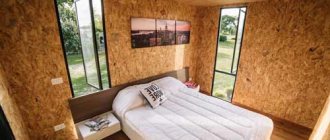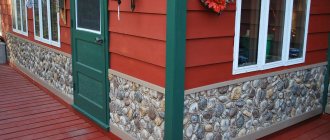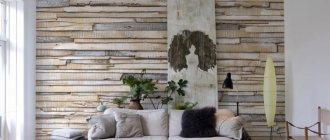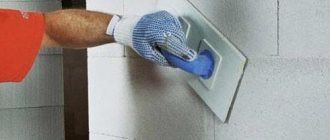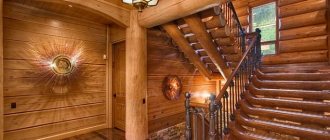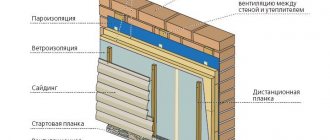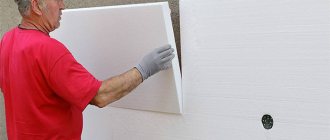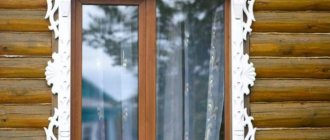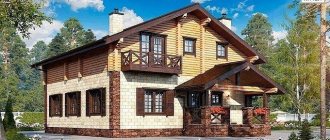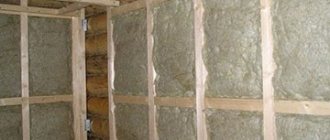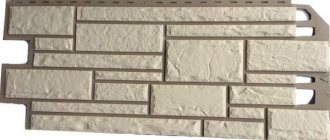What to paint with?
After construction and after painting the outside of a wooden house, the next question is the choice of materials for painting the inside of a wooden house. What to choose: water-based acrylic varnish, acrylic wood paint for interior work or wood wax?
Why is this necessary?
No matter how high-quality and expensive wood the house is lined with from the inside, in any case such coating requires processing. Surfaces in a living space are constantly exposed to temperature changes, changes in humidity, and in some cases, serious mechanical stress.
One of the main reasons why owners choose wooden houses is their naturalness. You often hear that such walls breathe and living in a wooden house is a pleasure. But a porous natural material, without appropriate protection, will last a maximum of 3 - 5 years, then the solid will darken, begin to crack, various bugs will actively eat it and, what is most unpleasant, mold will appear.
Applying a protective layer.
From this we conclude that paint for the interior decoration of a wooden house should perform not only purely decorative functions, but, more importantly, protect the wood from the aggressive influence of the external environment.
Environmental Safety
One of the main requirements for materials for painting the inside of a house is high environmental safety for people living in the house. All TEKNOS materials for painting walls and ceilings inside a wooden house are water-borne, odorless, do not contain solvents, and correspond to the highest environmental safety class M1.
We offer you to get acquainted with the possible options for painting the inside of a wooden house with acrylic varnishes, acrylic paints and TEKNOS wood wax.
No. 2. Features of caulking the walls of a wooden house
Caulking is carried out in two stages : the first time several months after the construction of the house, the second time after 6-8 months. The essence of the process is to fill the cracks with insulation , which is usually jute or tow . The thermal insulation of the house and its tightness depend on the quality of this work.
Caulking is carried out immediately inside and outside, going around the perimeter of the house and caulking each crown from the bottom up. Each time after this, the structure will rise by 5-7 cm and then settle, compacting the insulation, which will completely fill the cracks. You can proceed to finishing work only when shrinkage occurs after the second caulking. In order to know exactly when it is possible to carry out cladding, it will be necessary to regularly measure the height of the walls: if within 2-3 months the obtained values remain practically unchanged, then the main shrinkage processes have passed, and you can proceed to finishing. The next time caulking is done is after 5 years, and then only if necessary.
Caulking is performed in one of the following ways:
- "to the set." First, long thin strands are made from insulating material, and then they are wound into a ball. The gaps are filled with such strands, and the larger the gap, the greater the number of strands needed;
- "stretched" . This method involves the use of individual strands, which fill the gaps. A roller is formed from them, which is pushed into the gap.
To perform caulking you will need a simple set of tools : a hammer, chisels, a rubber mallet and a caulking spatula.
OPTION 1. Painting walls and ceilings with acrylic varnishes for interior work.
This option for painting the inside of a wooden house is the most traditional. A budget option for painting walls and ceilings can be acrylic semi-matte varnish PANELILAKKA. If you want to obtain varnish painting with different degrees of surface gloss, you can use acrylic matte varnish NATURA 15 or acrylic semi-gloss varnish NATURA 40. Acrylic varnish can be applied by brush or spray.
To preserve the natural color of the wood, colorless acrylic varnish is applied. Tinted colored acrylic varnish is applied for glazing colored painting of walls and ceilings. The disadvantage of tinted varnish when painting the inside of a wooden house is some “cloudiness” of the varnish coating and the difficulty of uniformly applying tinted varnish when painting walls and ceilings, which results in a “camouflage” effect or uneven tone of the painted surface.
OPTION 3. Painting walls and ceilings with wood wax.
For high-quality and beautiful painting of the inside of a wooden house, it is recommended to apply 2 layers of clear or tinted interior wood wax. Tinted wax gives the interior surfaces of a wooden house the most beautiful glaze effect. The wax does not form a continuous film, and as stated in the technical description for wood wax SATU VAHA (Satu Sauna Vaha), the treated wood fully retains its breathability. It is recommended to apply wood wax with a synthetic brush or spray if you have professional experience. For painting a wooden house, the TEKNOS concern offers the following wood waxes: SATU VAHA, HIRSIVAHA and TEKNOVAX 1160-00.
For glazing the inside of a wooden house, waxes (oil-wax) for wood have gained the greatest demand. The popularity of wax is due to many factors and, above all, the pleasant appearance of the treated surfaces…. READ
According to reviews from our customers, using SATU SAUNAVAHA wax is the best choice for painting the inside of a wooden house. SATU VAHA wood wax contains natural wax, belongs to the highest environmental safety class M1, does not emit harmful substances and does not cause allergic reactions, and is safe for direct contact with the human body. SATU VAHA wood wax has high performance properties, withstands exposure to water and high temperatures, and cleaning with detergents.
SATU VAHA wood wax is ideal for painting the inside of log houses, solid wood houses, profiled and laminated timber, as well as for painting lining or imitation timber. SATU VAHA wood wax has an economical consumption, which makes this option for painting the inside of a wooden house economically attractive. Samples of wax tinting for wood are presented in the sales areas of the Teknos brand store chain.
Helpful advice. Antiseptic for interior work Before painting the walls and ceilings inside a wooden house with acrylic varnishes or wood wax, the wood can be pre-treated with an aqueous primer antiseptic WOODEX AQUA BASE. The use of WOODEX AQUA BASE is not mandatory. However, according to Finnish experts and reviews from our customers, priming reduces the risk of biological damage to wood, and more importantly, applying acrylic varnishes for interior work and wood wax on wood treated with WOODEX AQUA BASE provides a more beautiful and uniform glaze painting of walls and ceilings.
Oil-based wood impregnation composition
Oil-based compositions are absolutely safe for human health. Suitable for both internal and external impregnation of wood. Application of oil impregnations is possible with a brush and a special spray gun (spray gun) for oil paints. In general, oil impregnation is the most durable protection among other types of impregnation. Oil impregnation protects wood from moisture and protects the color of the wood.
Resin-based impregnation composition
It is difficult to call such a product an impregnation; rather, it is a protective film that also protects the wood from external influences. Resin-based, various wood varnishes are available on the market.
Subscribe to our Yandex.Zen channel
OPTION 4. Painting walls and ceilings with acrylic paint for interior work.
To paint the interior walls and ceilings of a wooden house, water-based interior acrylic paints can be used, which form a colored, opaque coating. Interior acrylic paints for interior work are traditionally used for plasterboard, plastered surfaces and for painting wallpaper. TEKNOS interior paints are odorless, do not contain solvents, and are hypoallergenic, that is, they do not cause allergic reactions. For painting dry residential premises, BIORA acrylic paints are used, and for interior painting of rooms with high humidity, acrylic waterproof paints of the TIMANTTI series are used.
The most popular materials for interior work are: matte paint TIMANTTI 7 and deep matte paint BIORA BALANCE.
According to the recommendation of Finnish experts, TIMANTTI acrylic paints can be used for painting wooden surfaces of walls and ceilings inside the house. Computer tinting of TEKNOS interior acrylic paints is carried out according to various color cards and has thousands of possible options, which can be found in any of our network of Teknos branded stores.
Advice. How to repaint varnish. Restoration of wood Covering paint is the optimal restoration material; it does not require complete stripping of the wood. Unlike glazing compounds, which generally require fresh, unpainted wood for painting, topcoat paint will require a maximum of local sanding.
Preparing the surface for painting
Before you paint a log house with your own hands, you need to very carefully prepare the walls of the log house. Preparatory work must be carried out before painting any wooden buildings, with the exception of houses made of laminated veneer lumber. The durability of the coating depends on how well and efficiently the surface is prepared.
- Painting an old wooden house begins with removing the previous paint coating, which is removed with a scraper or spatula.
- If the walls of the house have not previously been painted, the surface just needs to be cleaned of dirt and dust.
- Next, the wood is sanded using a grinder with a special sanding attachment. First, grinding is performed with a coarse-grained abrasive (P 60-80), and then the surface is brought to smoothness with a fine-grained nozzle (P 120-150).
- Sanded walls are cleaned of wood dust using a vacuum cleaner.
- Before painting a log house after sanding, it must be treated with a protective agent. An antiseptic or primer is applied to the cleaned surface of the walls using a spray gun or a wide brush.
